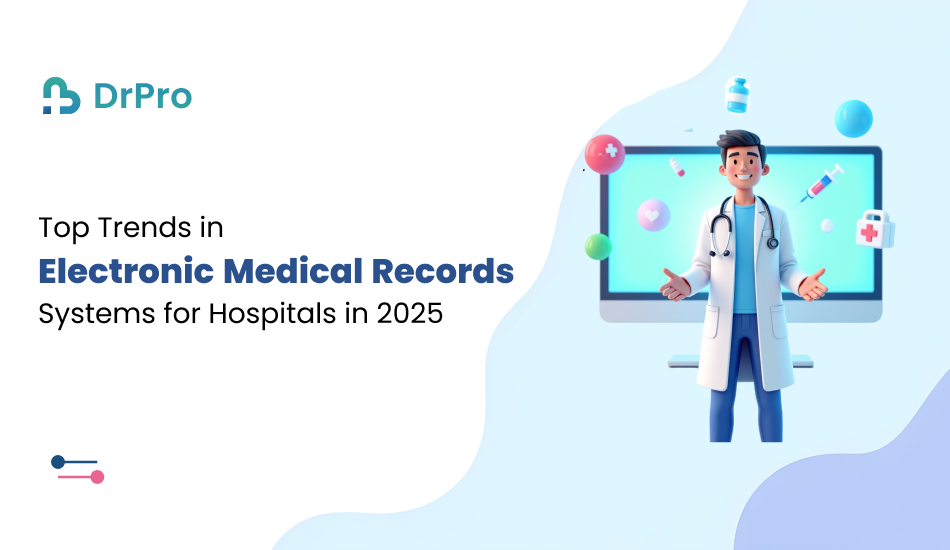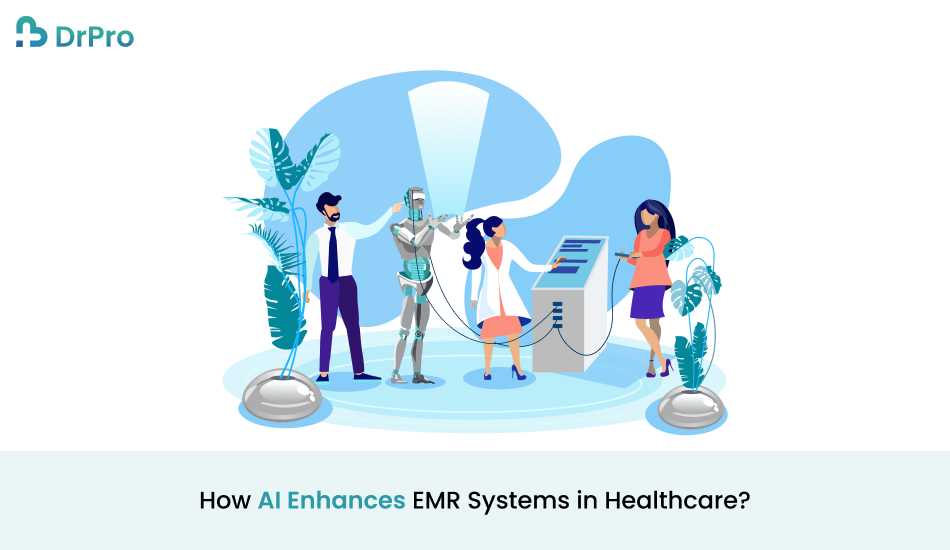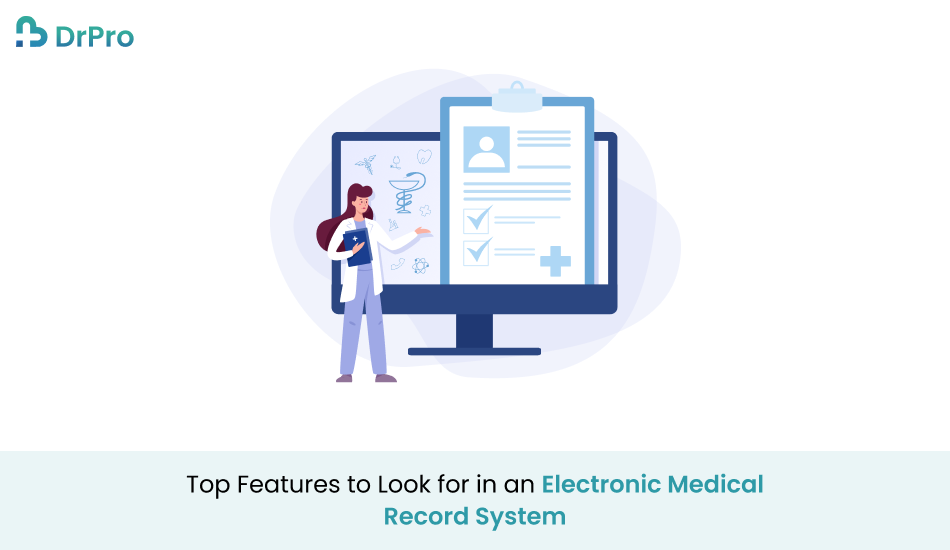Top Trends in Electronic Medical Records Systems for Hospitals in 2025
When hospitals and healthcare providers look toward the future, one thing becomes clear: the functionality of the Electronic Medical Records (EMR) systems is poised to grow more complicated. Most of today’s healthcare companies and facilities can barely think of functioning efficiently and effectively, without using electronic medical records, which used to be thought of as mere added extras! It is important to know more about modern trends in EMR systems in 2025 approaches forward, patient care and hospital functions should be improved with better technologies, and data security should also be maintained better. 1. Advantages of Modern EMR Systems Better Patient Care Through The Use Of Central Database For hospitals and other care providers, the importance of a centralized patient database is slowly starting to dawn. Contrary to paper documents or a variety of different information databases, contemporary EMR substitutes offer possibilities for perusing the full patient histories in real time. This helps in closing gaps in treatment and improves decision making and hence elevation of precise care. Improved Interoperability Across Healthcare Networks The primary problem of healthcare and integrated information systems has been in the information sharing of patient data among various healthcare organizations. According to some researchers, in 2025 EMRs will eliminate this barrier due to better integration. Information exchange between hospitals, primary care practitioners, specialists, and even pharmacies will minimize mistakes, minimize gaps, and consequently improve patients’ status. Increased Efficiency with Automation and AI Various technological advancements especially the concepts of automation and artificial intelligence (AI) are affecting the functioning of EMRs. Ministry-related repetitive activities like data entry work or appointment fixing can be automated, thus eliminating the troubles. The decrease in time taken to diagnose a disease or come up with a remedy for a disease will also be boosted by the applications of AI, freeing up doctors and health providers. Better Patient Engagement with User-Friendly Portals Another place where EMRs have been rapidly growing is in patient engagement. Some of the features include; Unlike traditional EMR which only allows medical documents to be recorded and retrieved, the modern EMR systems provide the patient with access to the following features Include; It also allows the patient to have an active role in health hence increasing satisfaction and compliance to treatment regiments. 2. Challenges in Implementing Advanced EMR Systems High Initial Costs and Resource Allocation Implementation of a new EMR system is not a small decision. The risks that are involved include costs of software, hardware, staff training, and certified expert advice. There could be difficulty in mobilizing resources as needed for systems implementation in hospitals. Nonetheless, the first-time cost of implementation of proper care and efficiency of processes delineated in the plans justifies the expected long-term efficient treatment. Resistance to Change Among Healthcare Staff A lot of healthcare providers, especially those who have mature EHMR systems implemented years ago may resist change to the new system. To overcome this resistance the following may be some of the good strategies; adequate training, enough communication, and support. There are always questions and misunderstandings that must be met to contribute to successful implementation. Ensuring Data Security and Privacy Compliance Since EMR is all about the multiple patients’ electronic records, data security, and privacy form the core of the entire system. Such requirements as HIPAA have to be followed strictly to retain patients’ confidentiality. Rising cases of cybercrime make it mandatory for healthcare facilities to adapt to strong security measures that could help reduce the risk of data infiltration. Managing Interoperability Between Legacy and Modern Systems A lot of the hospitals are still using the older systems of EMR and can be incompatible with the new more efficient systems. This results in a problem of enabling data transfer between old and new systems to be efficient. When a hospital is in the process of implementing modern EMRs, then they have to seek a way of ensuring that patients get the care they need from the two systems. 3. Emerging Trends in EMR Systems for Hospitals in 2025 AI and Machine Learning Driving Intelligent Insights AI as well as ML will continue to become integrated into EMR systems. These technologies can assist with understanding patient data, the probable outcome, and the possible recommendations. In many applications, healthcare specialists can use the results of the analysis of Big Data, AI, and ML algorithms, which will improve the decision-making process and contribute to the provision of individualized medical care. Seamless Integration with Telemedicine and IoT Devices As people’s use of telemedicine increases, EMR is more integrated than it used to be with technologies such as IoT devices. A telemedicine service enables medical practitioners to assess the patient through digital means, while IoT continually records patient data in time. The combination of these technologies and EMR results in improved and more updated patient information for management and quick responses. Cloud-Based Solutions for Scalability and Flexibility For a healthcare provider who seeks to expand his operations while avoiding large capital investments in equipment, cloud computing provides a unique opportunity. Wang noted that the use of cloud-based EMR systems is more flexible and gives the hospitals freedom to add storage and processing capabilities as required. It also makes it easier for hospitals with more than one location to transfer data to other parts of the hospital or other healthcare practices. Personalization of EMR Interfaces for Healthcare Providers The second trend for EMR systems in the society of 2025 is that personalization will take a leading role. Carers of the key Features of EMR systems will be able to adapt their interfaces according to individual practice requirements, to cater for better efficiency and decreased mental burden. Electronic medical records can also be configured with private dashboards that present relevant information, timely alerts accompanied by calls to action, and routine reports and letters that keep the EMR process productive and efficient for the healthcare providers on the front line of delivering care. 4. Overcoming the Barriers to EMR Adoption Addressing Cost Concerns with Scalable Solutions Even though
Top Trends in Electronic Medical Records Systems for Hospitals in 2025 Read More »









